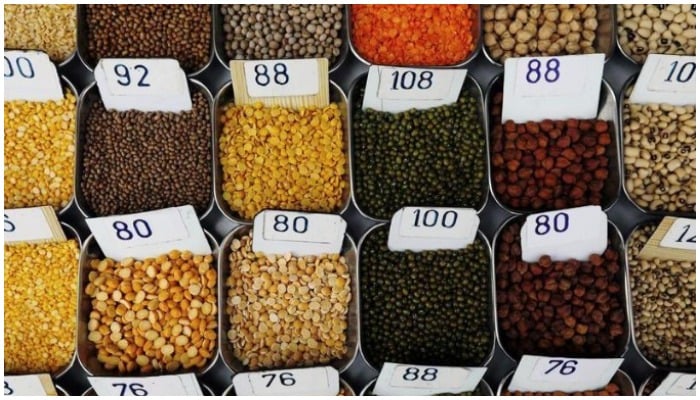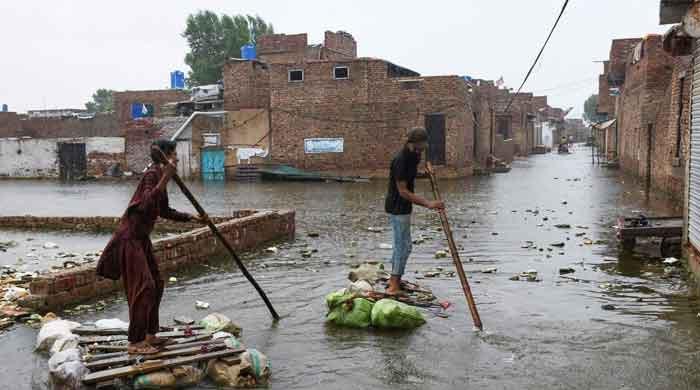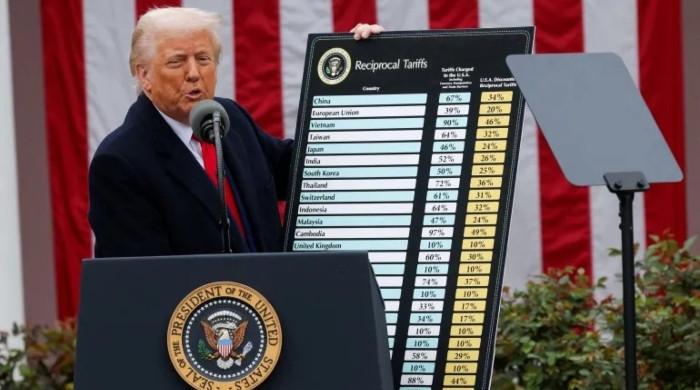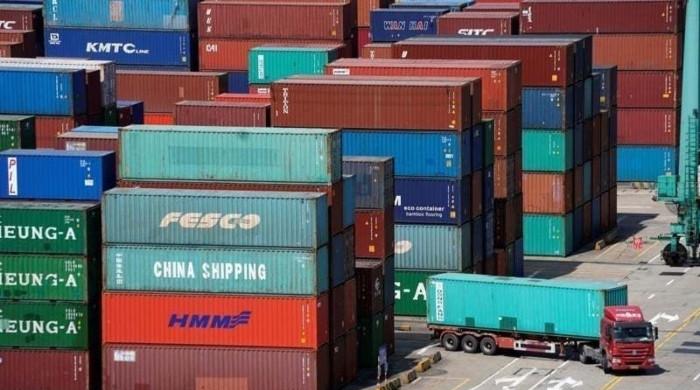Ehsaas Rashan: How will the government provide targeted subsidies?
Programme aims to support low-income families and aspires to disburse approximately Rs120 billion in targeted subsidies
November 23, 2021

The Ehsaas Rashan Riayat Programme has been fast-tracked for implementation as one of the policy responses to address the recent wave of food inflation, driven largely by rising prices in the international market.
The programme aims to support low-income families and aspires to disburse approximately Rs120 billion in targeted subsidies to 20 million eligible families through a network of 50,000 plus Ehsaas subsidy-enabled stores. Currently, low-income households spend approximately 20 percent of their income on wheat flour, pulses and cooking oil/ghee. Households with a monthly income of around Rs50,000 will be entitled to a monthly subsidy of Rs1,000 on these grocery items. This programme will be funded jointly by the federal and provincial governments on a 35:65 cost-sharing basis. So far all federating units except Balochistan and Sindh have joined the programme.
The digital Ehsaas Rashan Riayat subsidy mechanism draws lessons from the previous experience of developing digitally enabled disbursement mechanisms for the Ehsaas Emergency Cash programme in the wake of Covid-19. Its operating model also builds on the demographical offerings of the country. For instance, 70 percent of all grocery store purchases in Pakistan are made at kiryana stores (neighbourhood grocery stores). Today, the kiryana network with its 800,000 plus stores has coverage of many remote areas. It can serve as a backbone that can help the programme achieve its ambitions at scale.
Also, with its digitalisation requirement, the programme plans to take advantage of the country’s digital penetration. With around 86 million cellular subscribers, Pakistan’s teledensity stands at 85 percent; the country’s mobile penetration is 47 percent. Of these subscribers, 105 million are already utilising 3G/4G services.
For participation in the programme, both kiryana merchants and beneficiaries will be required to register and be verified. Beneficiaries can either register themselves on the Ehsaas web portal or send their identity card number via SMS at 8171, ensuring that the SIM is registered against the ID card number which is being texted. Beneficiaries will be verified through the recently concluded Ehsaas National Socio-Economic Registry (NSER) survey.
The programme aims to provide a 30 percent subsidy on flour, ghee/oil, and pulses (up to the total value of Rs1000 per month, per family). Merchants selling the three commodities covered under the programme will require an Android phone, a CNIC, a SIM card registered against the said CNIC, and a bank account to participate in the programme. All these requirements will be vetted.
Beneficiaries, on the other hand, will have to go to an Ehsaas-enabled kiryana store where the merchant will enter their CNIC and purchase details into an Android-supported mPOS (mobile point-of-sale). The mPOS, a secure mobile application linked to several databases, will enable real-time verification and processing of subsidies. To prevent fraud, a two-factor authentication system has also been built into the mPOS requiring a one-time password (OTP) which will be sent to beneficiaries’ mobile phone numbers.
The subsidy amount will be credited into merchants’ bank accounts in 24 hours along with a commission; the merchant will also have the option to see all transactions on the mPOS. Kiryana stores need to be adequately compensated to ensure their participation, given the costs involved for a kiryana store and the operating model requirements of the programme.
The National Bank of Pakistan (NBP), as the sole national agent of the State Bank of Pakistan (SBP), will leverage its nationwide coverage to lead and manage the implementation and subsidy disbursal processes. This will involve supervising merchant onboarding/training, managing the mPOS, and maintaining a beneficiary complaint management system, among other things.
We are aware of implementation challenges, particularly low digital literacy, the vast number of unbanked kiryana stores, and the prevailing disparities in access to information, hardware, and connectivity.
Despite these barriers, the Ehsaas Rashan Riayat programme holds great promise. It is the first step towards a target-based subsidisation future.
Once implemented, the programme will have multiple spillover benefits for the entire country. First, the participation of 50,000–100,000 kiryana agents (around 10 percent of all kiryana shops) will lead to the higher financial inclusion of a segment that has historically been financially excluded. This will also provide an ecosystem where the existing eight million cash recipients of Ehsaas Kafaalat can potentially transition into digital payment practices.
In addition, the adoption of digital tools will help develop digital literacy in remote areas, which can bolster Ehsaas’ ability to deliver its wide palette of social protection initiatives with far better ease and can help a largely uneducated segment of the population avoid being scammed.
Both the challenges and the much more significant potential benefits of the programme remain inherently clear. To maximise the impact of its benefits and to carefully manoeuvre across any barriers that arise, we look to all relevant stakeholders for their continued support.
— The writer is a senator and special assistant to the prime minister for poverty alleviation and social safety. She tweets @SaniaNishtar
Originally published in The News











